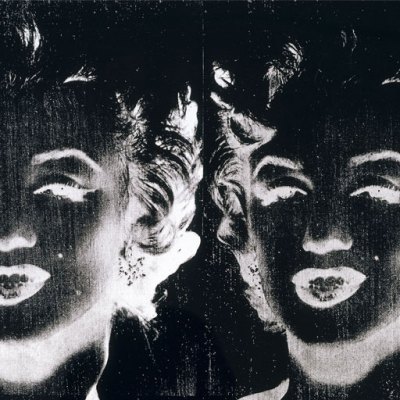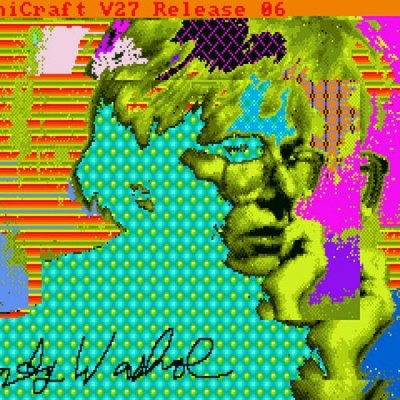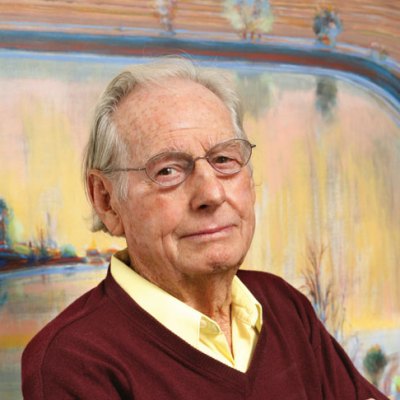It is often repeated that to see one Warhol is to see them all. And, in turning reproducibility into an art form, isn’t that half Warhol’s point? Yet at the Whitney’s spectacular survey of his work, ‘Andy Warhol – From A to B and Back Again’, nothing feels further from the truth. This exhibition of some 350 works opens with the headliners, a room dedicated to the silk-screened images that have made Warhol an instantly recognisable Pop superstar: the Brillo pads, Campbell soup cans, and Coca-Cola bottles. Walking around the gallery, and peering over camera phones snapping away for social media (Chairman Mao in make-up the stand-out favourite), we are immediately confronted by Warhol’s relevance in an age when the reproduction and consumption of images is more ubiquitous than ever.
Untitled (Hand in Pocket) (c. 1956), Andy Warhol. Collection of Mathew Wolf. © The Andy Warhol Foundation for the Visual Arts, Inc./Artists Rights Society (ARS) New York
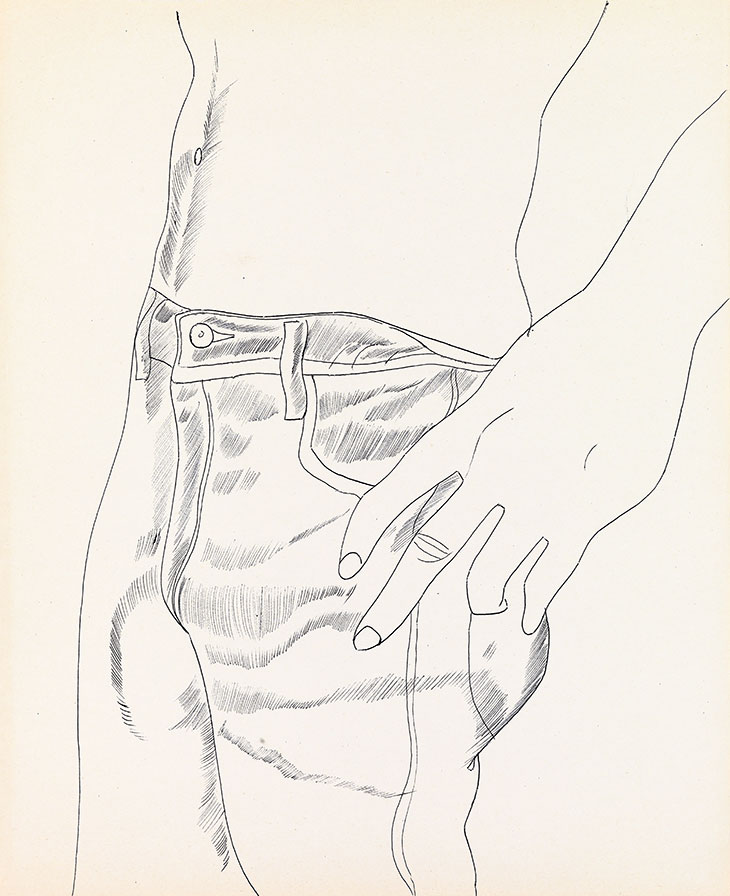
The Whitney could have put on a decent show on the familiar themes of image-making and celebrity. But the central achievement of this exhibition is how it frames Warhol before and after his 1960s heyday and demonstrates the complexities of his oeuvre – settling the question of whether we have exhausted ways of seeing his work. The curator, Donna De Salvo – who knew Warhol when she was a curator at the Dia Art Foundation in the ’80s, and was responsible for a number of shows on the artist there – told the New York Times that this show ‘is about Warhol before Warhol, this working class son of immigrants, a gay Catholic boy from Pittsburgh who comes to New York for his first job in 1949’. The recent interest in Warhol’s relationship to class and social status, as expressed through his fascination with the signifiers of consumer culture, receives full attention here – and rightly so. (Do read last year’s Warhol Working Class: Pop Art and Egalitarianism by Anthony E. Grudin for more.) Similar scrutiny is paid to Warhol’s sexuality, from the struggles of his teenage years to the anxieties around AIDS in the last years of his life. In his early ballpoint pen sketches of homoerotic scenes, cross-dressing downtown friends, and penises with ribbons, we get a sense of where Warhol came from and where he would soon go.
Elsewhere, we are reminded of just how many fingers the artist had in different pies. We are presented with Warhol’s commissioned portraits, a key source of income for the artist – such as The American Man (Portrait of Watson Powell) (1964), in which a headshot of the businessman is reproduced in various shades of beige. The Exploding Plastic Inevitable project, a series of multimedia performances in 1967–68 with live music from the Velvet Underground and Nico, is heard and seen in all its hyper-sensorial hipness.
Paramount (1984–85), Jean-Michel Basquiat and Andy Warhol. Private collection. © The Andy Warhol Foundation for the Visual Arts, Inc./Artists Rights Society (ARS) New York
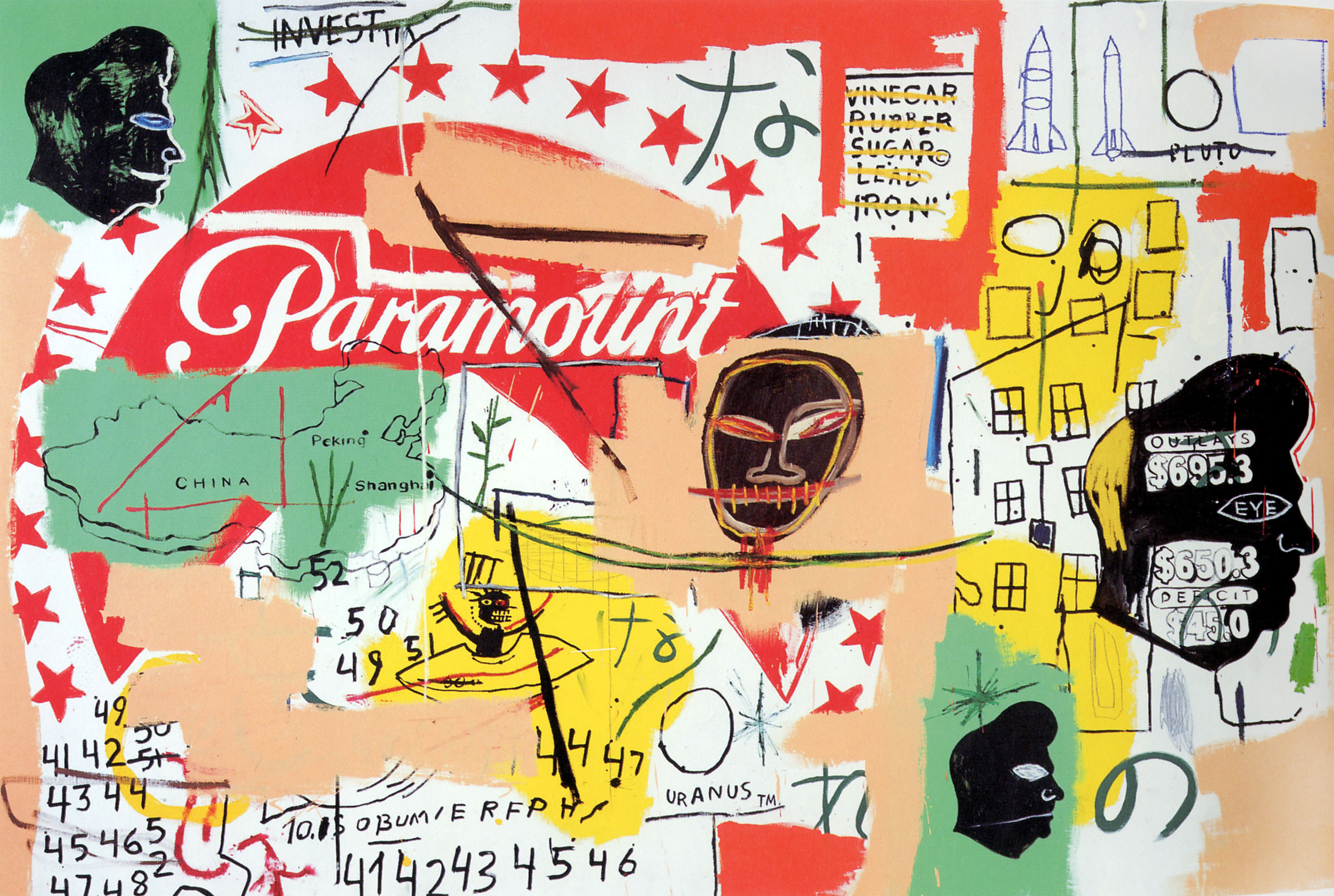
One story that is relatively untold is Warhol’s rebranding as unapologetic businessperson in the latter part of his career – although the entrepreneurial spirit is evident in the museum gift shop’s extensive, unembarrassed (re-)packaging of Warhol as wallpaper, socks, Calvin Klein denim jackets, and condoms. Instead, the selection of works following his survival of the assassination attempt by Valerie Solanas at his Factory studio in 1968, which left him severely injured and having to wear a surgical corset for the rest of his life, focuses on his collaborations with younger artists, his use of Catholic iconography, and the AIDS crisis.
Warhol’s creative partnerships with the East Village artists of the ’80s, especially Keith Haring and Jean-Michel Basquiat, are particularly striking. Basquiat, who worked extensively with Warhol between 1983 and ’85, said that the older artist would begin with ‘something very concrete, like a newspaper headline or product logo, and then I would sort of deface it’. Works like Paramount (1984–85) are representative of this push and pull. Our attention might be first attracted to the Paramount logo – perhaps chosen as Warhol’s partner, Jon Gould, was the company’s vice-president at the time – but we are soon lost in Basquiat’s scrawled universe of maps, rockets, masks, letters and numbers. Collaboration (Paramount) demonstrates how these two very different artists were working through questions of capitalism and celebrity in the last years of both of their lives.
Camouflage Last Supper (1986), Andy Warhol. Private collection. © The Andy Warhol Foundation for the Visual Arts, Inc./Artists Rights Society (ARS) New York

Perhaps the most surprising of all, the final room presents Warhol at his most abstract. Spanning the length of one wall is the 25-foot-long painting Camouflage Last Supper (1986), part of the last series the artist composed, just weeks before his death in February 1987. Covered with a camouflage pattern, Warhol’s painting here is based on reproductions of Leonardo’s original. It is a clear example of the artist’s fascination with the Catholic imagination of his youth, a belief structure he never totally abandoned – see also his beatification of Marilyn as if she were a Byzantine icon. Camouflage Last Supper originally hung in the headquarters of the Milanese bank Credito Valtellinese, opposite the Church of Santa Maria delle Grazie where Leonardo’s original is housed. Facing it in this exhibition is another Leonardo revision, Sixty-Three White Mona Lisas (1979). If Duchamp, in drawing a moustache on the most famous sitter of all time, playfully sought to undermine the pedestals and canons of art history, Warhol’s take feels less iconoclastic, and transforms the painting anew. This riveting, unexpected exhibition allows us to see this most familiar of post-war artists through similarly fresh eyes.
‘Andy Warhol – From A to B and Back Again’ is at the Whitney Museum of American Art, New York, until 31 March 2019.

